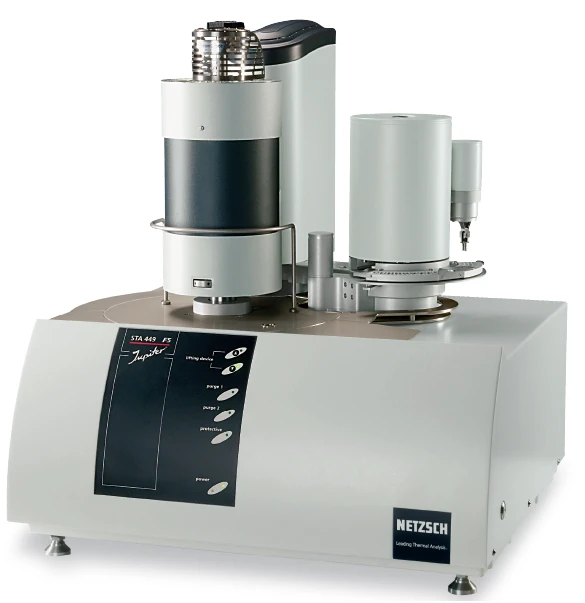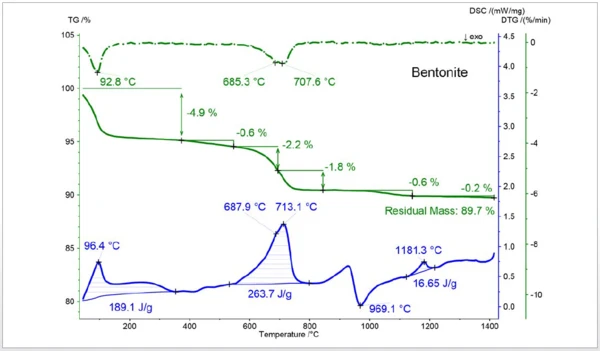Introduction
Bentonite is a clay consisting mainly of montmorrillonite and stands out due to its absorbent capabilities. Some of the main uses are as a binder, purifier, absorbent and as a groundwater barrier.

Measurement Conditions and Results
This plot exhibits the TGA (green), DTGA (green dotted) and DSC (blue) curves of a 19.7 mg bentonite sample. The 1st mass-loss step (DSC peak temperature 96°C) is due to the release of water followed by a small mass-loss step of 0.6%. This is most likely due to the release of SO2 indicating a pyrite contamination. Above 600°C, water is released from the bentonite structure (DTGA peaks at 685°C and 708°C). The exothermic DSC peak at 969°C represents the Phase TransitionsThe term phase transition (or phase change) is most commonly used to describe transitions between the solid, liquid and gaseous states.phase transition of this clay mineral. The endothermic DSC peak at 1181°C is most likely due to partial melting or a further SO2 release.

Conclusion
Complex thermal behavior can be investigated with the STA 449 F5 Jupiter®. In case of inhomogeneous mixtures, crucibles with high volumes are available which allow for an increased sample mass of several grams.